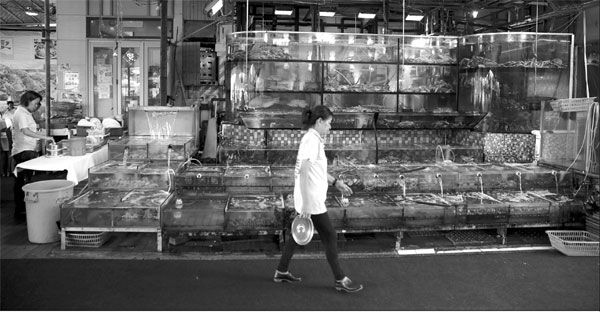Oceans in peril, but seafood lovers keep on eating
Updated: 2015-10-07 16:36
By Dennis Chong In Hong Kong Agence France Presse(China Daily USA)
|
|||||||||
A seafood lunch in Hong Kong is enjoyed by locals and visitors alike, but with threatened species on the menu and fishing practices that endanger marine life, campaigners want to change the city's appetite.
Hong Kong is the second-largest consumer of seafood per capita in Asia - an average resident consumes 71.2 kilos of seafood each year, more than four times the global average, according to the World Wide Fund for Nature Hong Kong.
Yet the city of 7 million has been forced to become one of the biggest seafood importers in the world as local waters are depleted of fish stocks.
Whether in high-end restaurants or waterside eateries, seafood is ubiquitous in the city, where customers often choose their fish live from a tank.
Baked lobster with noodles in cheese and deep-fried prawns in salted egg yolk are among local favorites.
But a "fish tank index" compiled by WWF Hong Kong found that more than half of the species available in the city's traditional restaurant tanks were from "highly unsustainable" sources.
"Overfishing is driving the collapse of the world's ocean fish stocks and edging many types of fish towards extinction, yet they are still on our menus," WWF Hong Kong conservation director Gavin Edwards says
"Hong Kong has a special responsibility to turn the tide as one of the biggest consumers of seafood."
Unsustainable fish include those caught by controversial fishing practices, such as using cyanide poison, or from overfishing already depleted species.
Popular, threatened seafood in Hong Kong include grouper, wild sea cucumber and humphead wrasse, a coral reef fish.
Lack of information
The WWF has launched an online seafood guide for Hong Kong detailing which types are deemed unsustainable.
It also recently held a "Sustainable Seafood Week" asking restaurants to provide ocean-friendly options.
But there is still a way to go to change consumer habits.
Visiting Hong Kong for a post-graduation trip, Japanese student Ted Machizawa, 22, has just finished lunch in the coastal town of Sai Kung, famous for its seafood.
He says he had no idea whether his meal, steamed grouper and shrimps, could pose a threat to the ocean.
"We're just trying to see what it's like here. We are probably not too keen on knowing what kind of fish it is," he said, sitting metres away from tanks packed with live crabs and reef fish.
Hong Konger Janice Fung says restaurants rarely give information on sourcing.
"If you go to an expensive restaurant or a specialized seafood shop they might tell you. Otherwise the information is not comprehensive," she says as she waited for a meal at Cafe Deco on the city's famous Peak, which serves a wide range of seafood.
"If you tell me what I am eating is not sustainable I will try to avoid it," she says.
Cafe Deco has opted to provide an alternative sustainable menu as part of the WWF push - shunning the controversial delicacy shark fin, for example.
"You can't necessarily tell the difference (in flavor)... if you don't use shark fin to make dumplings," senior chef William Chang says as he puts the finishing touches to ocean trout-stuffed ravioli, a dish on the sustainable menu.
Chang says restaurants should "take the first step" to change people's eating habits.
Some suppliers are also trying to help.
Banker-turned-fish farmer Mark Kwok hopes that by farming groupers, which are on the decline in the ocean, he can help stem the crisis.
His farm in the northern hillside town of Yuen Long was accredited as sustainable by the WWF in 2013.
"We have about 35,000 fish. Even if you were to eat all of them, it wouldn't make a dent in the ecosystem because these are farmed fish that have never seen the ocean," he says.
Environmentalists in the Philippines say stocks of grouper are dwindling near the island of Palawan, a major source for Hong Kong.
"We have fishermen who say they used to catch them near the coast. But now, they have to go further out to sea," says Melo Ponce De Leon, spokeswoman of the government's Palawan Council for Sustainable Development.
Fear of change
Some Hong Kong restaurateurs worry that changing their menus would dent their incomes.
"Many of our customers are from the Chinese Mainland and they want to get something they have never seen before," says NgWai-lun, one of the owners of Chuen Kee Seafood Restaurant on Sai Kung's promenade.
"They like to pick the colorful ones... or something caught fresh from the wild," Ng says, pointing out a tank of humphead wrasse and groupers.
Ng says he would have to scrap 70 percent of the menu to make it ocean-friendly, something he fears would drive customers away.
But campaigners say progress has been made.
"We found in a recent survey that 80 percent of customers would not buy unsustainable seafood if they knew it was unsustainable," Edwards says.
"There is more awareness, but we still have much further to go."
|
A worker walks past tanks holding seafood at a restaurant in the Sai Kung district of Hong Kong earlier this summer. A campaign promoting sustainable seafood is underway in the city.Photos By Isaac Lawrence / Agence France Presse |
|
|
(China Daily USA 10/07/2015 page12)
- Russian warplanes hit IS targets in Syria
- Senior US envoy to visit Japan, S Korea, China
- Russia, US agree to cooperate in solving Syria crisis: Russian FM
- Iranian President calls Iran deal victory over war
- LatAm experts praise Xi on yuan, globalization
- Evidence found of summertime water flows on Mars: study
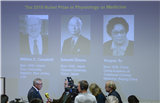
 China wins first Nobel in medicine
China wins first Nobel in medicine-
 Gary Locke: Candor key to relations
Gary Locke: Candor key to relations -
 Saving Chinese folk songs
Saving Chinese folk songs 
 Candlelight vigil for Oregon shooting victims
Candlelight vigil for Oregon shooting victims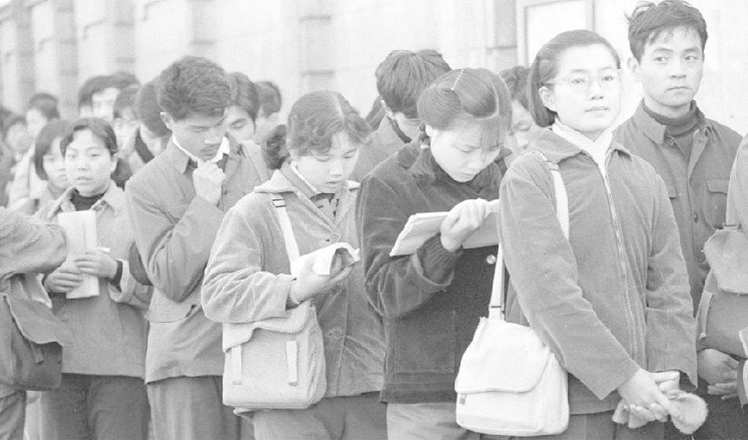
 Chinese people's pursuits in different eras
Chinese people's pursuits in different eras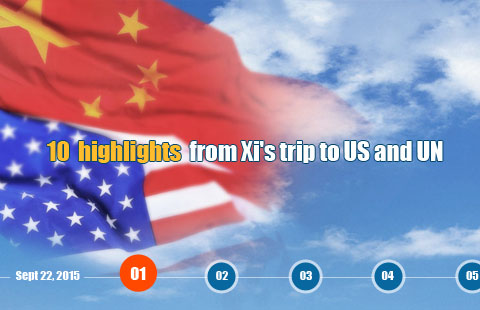
 Ten highlights from Xi's trip to US and UN
Ten highlights from Xi's trip to US and UN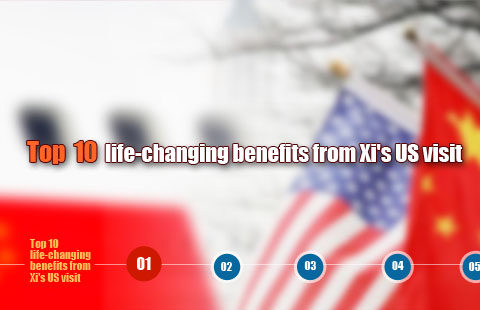
 Top 10 life-changing benefits from Xi's US visit
Top 10 life-changing benefits from Xi's US visit-
 Highlights of President Xi's speeches at UN
Highlights of President Xi's speeches at UN
Most Viewed
Editor's Picks

|

|

|

|

|

|
Today's Top News
Tu first Chinese to win Nobel Prize in Medicine
Huntsman says Sino-US relationship needs common goals
Xi pledges $2 billion to help developing countries
Young people from US look forward to Xi's state visit: Survey
US to accept more refugees than planned
Li calls on State-owned firms to tap more global markets
Apple's iOS App Store suffers first major attack
Japan enacts new security laws to overturn postwar pacifism
US Weekly

|

|
